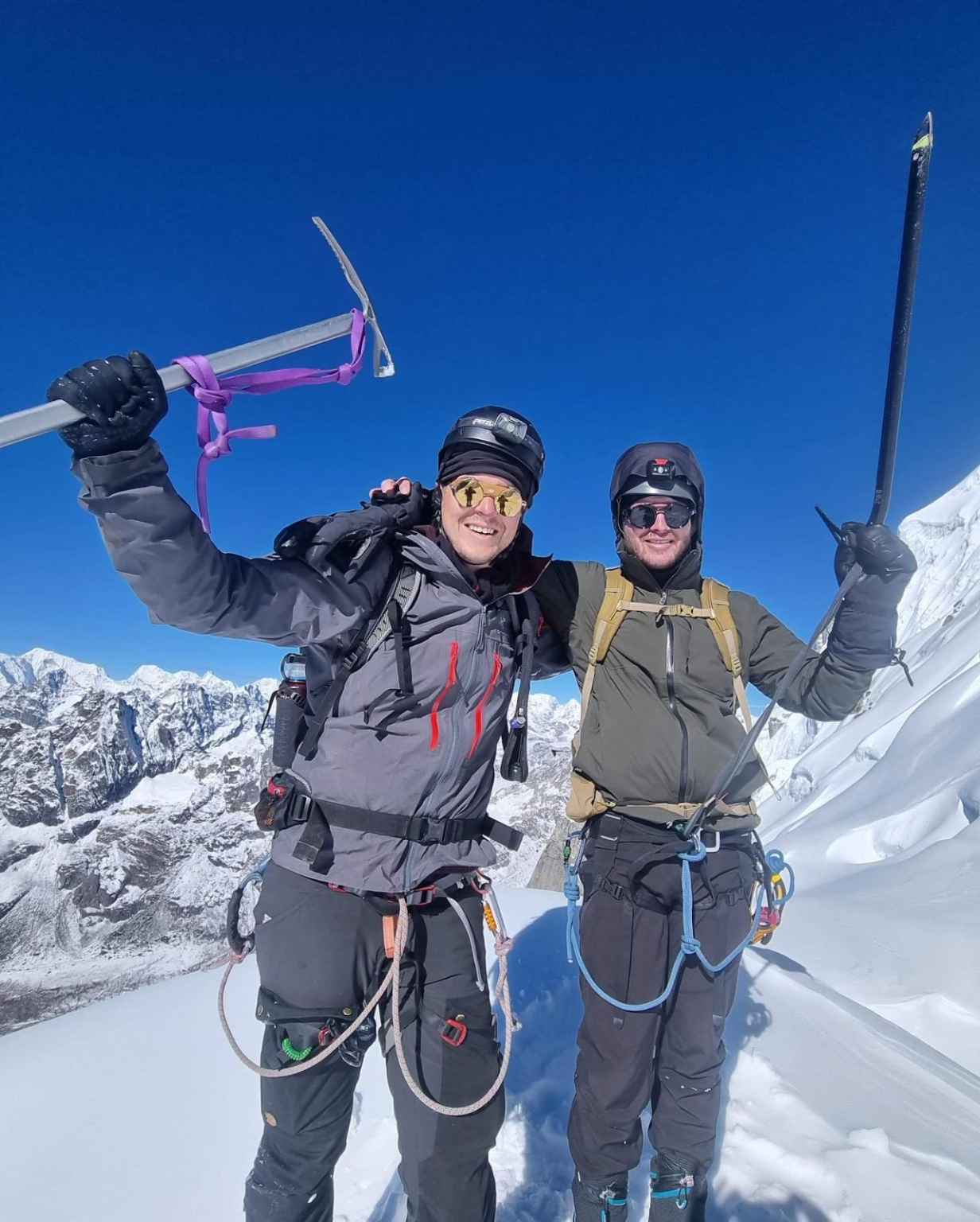The majestic Himalayas have long beckoned adventurers with their untamed beauty and towering summits. Among Nepal’s many climbing opportunities, three peaks stand out as ideal choices for trekkers and aspiring mountaineers seeking high-altitude achievement without the technical demands of 8,000-meter giants: Island Peak, Lobuche Peak, and Mera Peak. These mountains, each over 6,000 meters, offer the perfect balance of challenge, beauty, and accessibility. Whether you are looking to test your limits, sharpen your alpine skills, or simply experience the grandeur of the Himalayas, these peaks promise unforgettable adventures.
Island Peak – A Classic Climb in the Heart of the Khumbu
Island Peak (Imja Tse) rises proudly to 6,189 meters (20,305 feet) and is among Nepal’s most frequently climbed trekking peaks. Located in the Imja Valley, close to Everest Base Camp, it is the perfect introduction to Himalayan climbing. It earned its name from British mountaineers in 1953, who noted that it appeared like an island in a sea of glaciers.
The climb to Island Peak is often combined with the Everest Base Camp trek, allowing climbers ample time to acclimatize. Trekkers follow the scenic trail through Namche Bazaar, Tengboche Monastery, and Dingboche, soaking in views of Ama Dablam and Lhotse along the way.
Although not a technically extreme climb, Island Peak presents a real mountaineering experience. The final summit push involves traversing glaciers, ascending a steep headwall, and navigating a narrow, exposed ridge. Climbers must use ropes, ice axes, and crampons, making basic alpine training essential.
From the summit, the views are absolutely breathtaking—Lhotse, Makalu, Baruntse, and Ama Dablam dominate the skyline. The feeling of standing on Island Peak is nothing short of triumphant—a blend of accomplishment, awe, and pure Himalayan wonder.
Lobuche Peak – A Technical Treasure Near Everest
Lobuche Peak consists of two summits—Lobuche East (6,119 meters / 20,075 feet) and Lobuche West (6,145 meters). Of these, Lobuche East is the officially recognized trekking peak and is more accessible to climbers. It lies close to the Everest Base Camp trail, offering not only a rewarding climb but also the chance to explore one of the world’s most legendary trekking routes.
Lobuche is notably more technically demanding than Island or Mera, making it a favorite among climbers with previous alpine experience. The approach includes a thrilling mix of rock scrambling, snow and ice climbing, and fixed rope sections. The final ridge is sharp and exposed, demanding careful footwork and confidence in rope techniques.
The ascent typically begins from Lobuche village, following a high camp route above the Khumbu Glacier. Many climbers choose to visit Kala Patthar or Everest Base Camp beforehand for acclimatization and inspiration.
At the summit, the rewards are exceptional: panoramic views of Everest, Lhotse, Nuptse, Pumori, and even distant Cho Oyu. The rugged beauty and technical aspects of the climb make Lobuche East a true alpine gem for serious adventurers.
Mera Peak – The Roof of the Trekking World
At 6,476 meters (21,247 feet), Mera Peak is the highest trekking peak in Nepal. Situated in the remote Hinku Valley, east of the Everest region, Mera is celebrated not only for its height but also for its incredible panoramic views. From its summit, one can witness five of the world’s tallest peaks: Everest, Lhotse, Makalu, Cho Oyu, and Kanchenjunga.
Despite its altitude, Mera is considered the least technical of the three peaks, making it ideal for strong trekkers seeking a high-altitude challenge without steep, technical climbing. The journey to Mera is an adventure in itself—trekkers fly into Lukla and follow a remote trail through lush forests, high ridges, and alpine pastures, encountering fewer crowds than the Everest region.
The final climb involves glacier travel, moderate slopes, and fixed ropes for safety on steeper sections. While technically straightforward, Mera demands excellent fitness, proper acclimatization, and cold-weather preparedness.
What truly sets Mera apart is the sense of remoteness and solitude, along with the awe-inspiring views from the top. Few summits in the Himalayas offer such a vast, uninterrupted Himalayan panorama.
Choosing the Right Peak
Each of these peaks offers its own distinct flavor of adventure, and choosing the right one depends on your goals, experience, and appetite for challenge.
- Island Peak is best suited for trekkers seeking a moderately technical climb in the Everest region with close-up views of Lhotse and Ama Dablam.
- Lobuche Peak is the most technical of the three, recommended for those with previous climbing experience who want to sharpen their alpine skills.
- Mera Peak is ideal for trekkers aiming to reach the highest possible elevation on a non-technical climb and enjoy a quieter, less-trodden path.
Preparation & Safety
Climbing any of these peaks requires careful planning, physical conditioning, and respect for high-altitude environments. Proper acclimatization, hydration, and nutrition are vital. While these are classified as “trekking peaks,” all require basic mountaineering skills such as:
- Using crampons and ice axes
- Roping up for glacier travel
- Managing altitude-related risks
- Understanding weather patterns at high elevations
Most climbers opt for guided expeditions, which include logistics, equipment, permits, and trained guides. Having professionals handle the technical aspects ensures safety and increases summit success.
Conclusion: Embrace the Challenge, Elevate the Soul
Whether you dream of standing on a snowy summit gazing across a sea of Himalayan giants, or wish to push your physical and mental boundaries, Island Peak, Lobuche Peak, and Mera Peak offer transformative journeys. These mountains are not just summits to be climbed, but experiences to be cherished—each step a story, each sunrise a reward, and each summit a triumph of will and spirit.
In the world of Himalayan adventure, these three peaks stand tall as symbols of courage, discovery, and personal achievement. Choose your path, train your body, prepare your mind—and set forth on the adventure of a lifetime.
Contact Details
———————
Company address: Everest Trekking Routes Pvt. Ltd.
16 Khumbu, Nayabazaar, Kathmandu, Nepal
Mobile : +977-9843467921 (Rabin)
Email: [email protected]
URL:- www.everesttrekkingroutes.com


